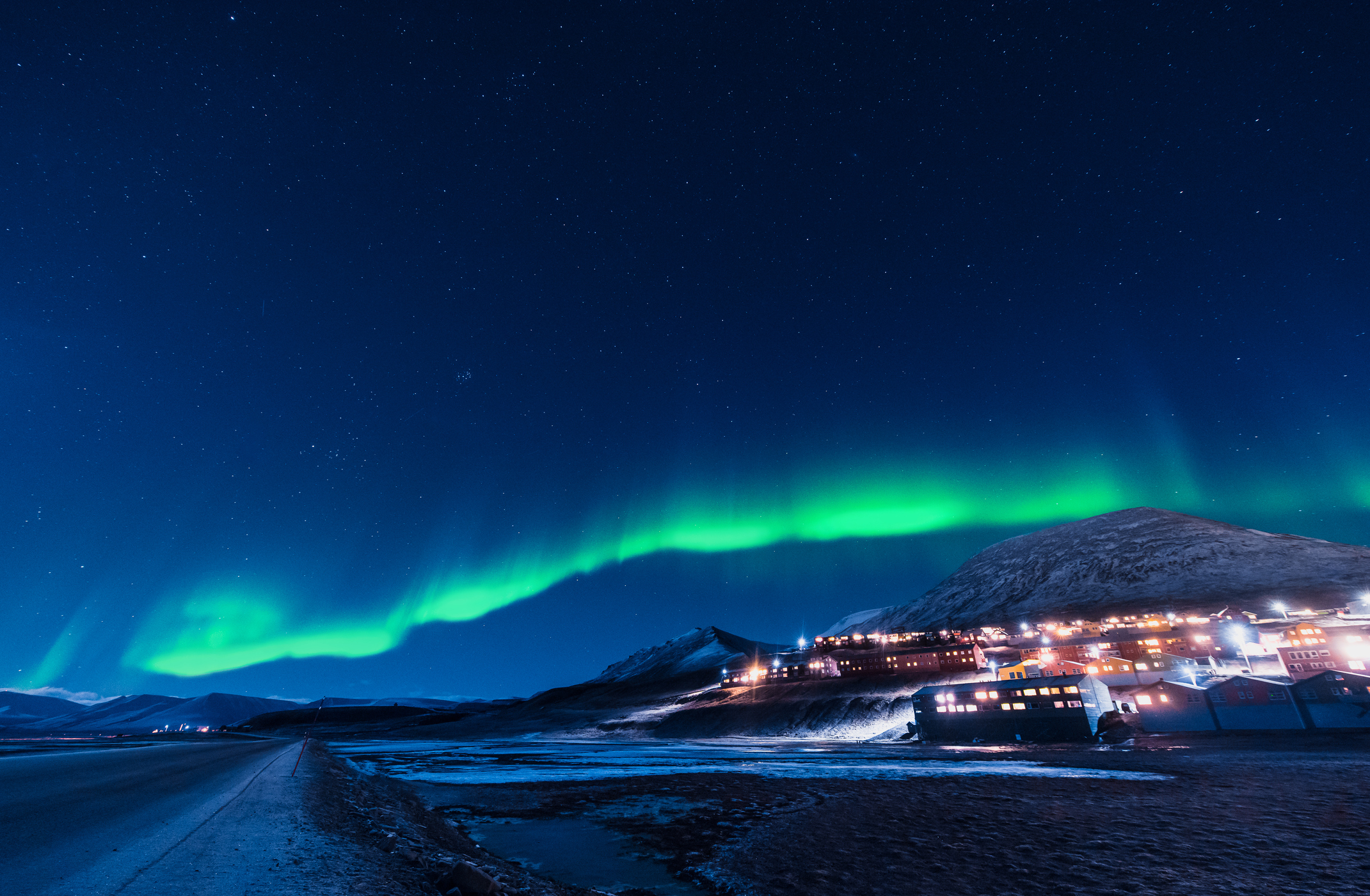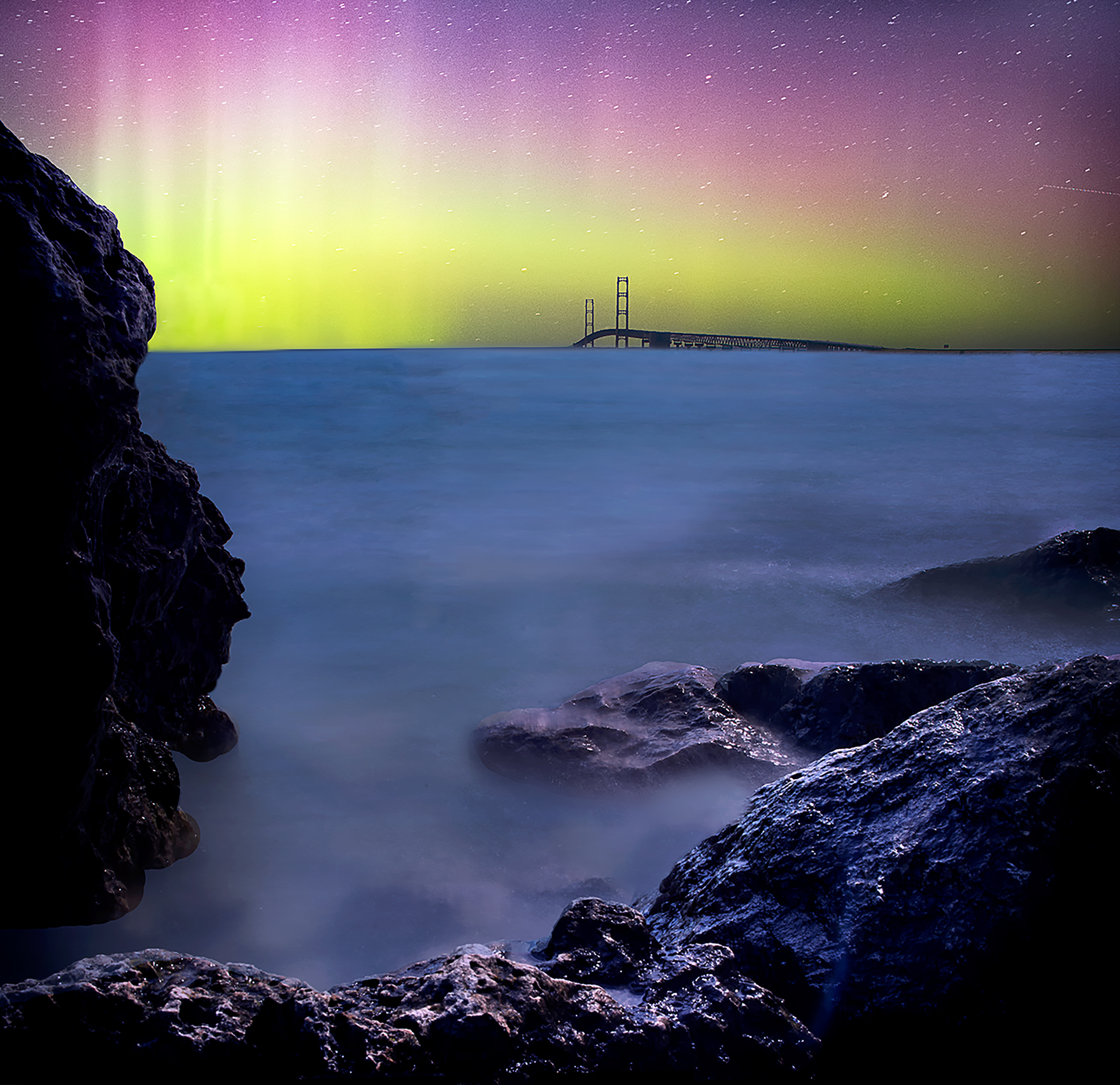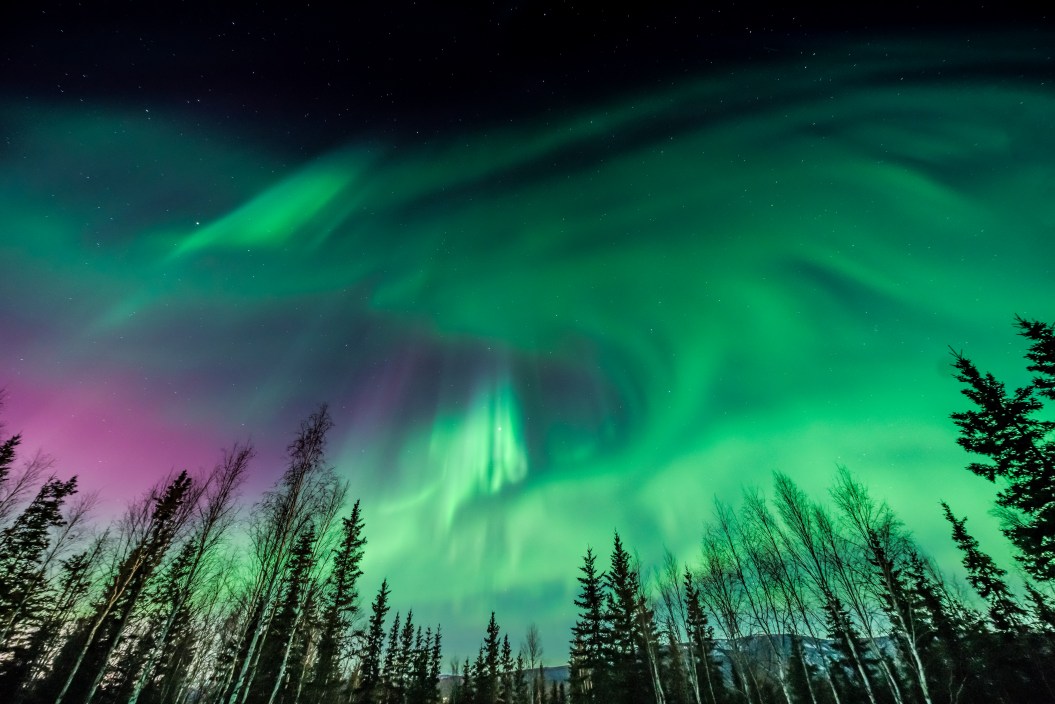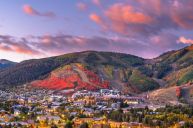The Northern Lights, also known as the aurora borealis, have bewitched and delighted people close to the Arctic Circle for centuries.
The aurora has long been attributed to divine or magical beings, and legends throughout history as to the origins of the waves of colored light have abounded. Despite now having a scientific explanation, the Northern Lights are no less magical, and seeing them in person should be on anyone's bucket list.
We've compiled a few top tips and a list of the best places to see the Northern Lights to help make your aurora dreams a reality.
What Are the Northern Lights?

krissanapongw/Getty Images
The Finns believed the lights were from a Finnish firefox sprinting across the snow, causing sparks to ignite the sky, while the Norse believed the aurora was light that was reflected off the shields of Valkyrie maidens, ushering Viking warriors into Valhalla. The people of the far-north Nunavik Island thought the lights were from walrus spirits playing ball with human skulls.
The true science behind this phenomenon was finally understood in the 20th century when researchers discovered the culprit behind the colorful light show: the solar wind. The solar wind is a flow of electrically charged particles (also known as ions) that streams continuously from the sun. This wind travels across space and when it collides with the Earth's atmosphere, the Earth's magnetic field redirects the charged particles toward the North and South Poles, where the magnetic field is strongest. The collision of ions with the magnetic field causes the streams of light that make up the Northern Lights.
The different colors are the result of the ions colliding with different chemicals at different altitudes. Greens and yellows, the most common colors, are caused by collisions with oxygen at lower altitudes. Reds and blues are more rare and are caused by ions striking nitrogen atoms.
Planning Your Northern Lights Trip
The Northern Lights are happening constantly, but to see them, you have to be in the right place at the right time.
Where To Go
The best places to see the Northern Lights are in the "auroral zone," which is within a 1,550-mile radius of the North Pole. You can also see the aurora in the southern hemisphere, where it's called the aurora australis, or the Southern Lights. There's far less landmass around the South Pole though, so unless you have a trip booked to Antarctica, the northern hemisphere is logistically easier to reach.
When to Go
The time of year also matters, as you need sufficient darkness to see the Northern Lights. The auroral zone is so far north that it experiences "midnight-sun" (well worth a trip to see in and of itself) and for half the year experiences very little darkness. Plan your trip for between September and April to ensure there's enough nighttime. To increase your chances of total darkness, try to aim for a time around the new moon, as a fuller moon can drown out the Northern Lights, and make sure your location is far from the light pollution of cities or towns.
The Right Conditions
Lastly, you need clear skies and high solar activity to make the most of your Northern Lights viewing. It's best to plan a trip of at least a few days length, to ensure you have opportunities for good weather and strong solar activity. The University of Alaska Fairbanks Geophysical Institute produces an aurora forecast, so keep an eye on the forecast as your trip approaches. Remember, though, the forecast is always changing.
Here are our top recommended spots for a Northern Lights trip that meet all of the above criteria and more.
1. Fairbanks, Alaska

NotYourAverageBear/Getty Images
This Interior Alaska city is one of the easiest places to get to on our list, with direct flights from several Lower 48 cities, including Seattle, Chicago, and Minneapolis. Fairbanks is renowned for its frequency of Northern Lights; it's located right under an area called the auroral oval, a zone over Earth's geomagnetic North Pole. Visitors have the chance to see the Northern Lights four out of five nights, and because it is so dry and cold in Fairbanks, the weather is wonderfully clear year-round.
Fairbanks itself is a fun town, with plenty to do besides hunting for the Northern Lights. Visitors can enjoy dog sledding tours, cross-country skiing, a fantastic live music and arts scene, and the enlightening Museum of the North. Head out to Chena Hot Springs Resort for the ultimate aurora experience in their natural hot springs.
The University of Alaska Fairbanks also puts out an aurora forecast every night, and there are plenty of webcams outside of town trained on the sky to catch the aurora.
Just make sure you bring your warm clothes. Fairbanks winters can reach -40 degrees!
2. Svalbard, Norway

BublikPolina/Getty Images
Svalbard, an incredibly remote archipelago between Norway and the North Pole, is a fantastic place to see the Northern Lights, given how far north the islands are. Svalbard, at 78 degrees north, experiences nearly 24 hours of darkness from November through January, making it possible to see the Northern Lights even during the "day".
Make your Northern Lights hunt on Svalbard a little more epic by going on a multi-day camping expedition by sled dog. There are also boat and snowmobiling tours to be had and ice caves to explore. But beware, there are more polar bears than people on Svalbard. If you are seeking the Northern Lights in Svalbard outside of an official tour, it is recommended that you carry a powerful rifle and flare gun and, if you are camping, bring tripwires or bear fences to surround your campsite and always have someone on polar bear guard.
Svalbard, being as remote as it is, can be tricky to get to. The best way is to fly from mainland Norway to Longyearbyen, on Svalbard's largest island, Spitsbergen. Uniquely, Svalbard is an entirely visa-free zone.
3. Lapland, Finland

mantaphoto/Getty Images
Lapland is Finland's most northern region and is renowned for its Christmas spirit and magical, boreal landscape. The Northern Lights are said to be visible 200 nights a year from September to April, so a visit here almost guarantees a good view every other night between September and March.
Lapland is also the traditional home of the Sámi, an indigenous people of northern Scandinavia who are known for their reindeer herding and crafting. There are plenty of cultural experiences to partake in, including visiting the small town of Inari, home of the Sámi Parliament and cultural center of the Sámi of Finland.
READ MORE: This Video of Fishing Under the Ice in Finland is Insane
There is no shortage of places to stay in Lapland, from seaside villas to ice hotels to a Santa Claus Village in Rovaniemi. There's also plenty to do, from reindeer sleigh rides, snowmobile tours, dog sledding, and fat biking.
4. Upper Peninsula, Michigan

Morgan Somers/Getty Images
While an international excursion is always fun, you don't need to travel 15 hours to see the Northern Lights—you can see them in the Lower 48, on Michigan's Upper Peninsula.
Michigan has two great things going for it when it comes to Northern Lights viewing: its northern latitude and relatively low light pollution. The Upper Peninsula is home to Headlands International Dark Sky Park, one of the first dark sky parks established in the world. Dark sky parks are exactly what they sound like, areas that possess exceptional starry nights and low light pollution. These parks have been set aside for permanent access so that the public can enjoy unparalleled views of the night sky.
Headlands International Dark Sky Park has trails and plenty of viewing areas, as well as educational events on astronomy and the Northern Lights.
Unfortunately, you can't sleep in the dark sky park. After all, the whole point of the dark sky park is to stay away to see the night sky. You can stay on nearby Mackinac Island at Mission Point Resort though, and their staff will make sure to alert guests at the first sighting of the aurora.
5. Orkney, Scotland

LeoPatrizi/Getty Images
The Orkney Islands, or simply Orkney, are a group of islands located about 10 miles off the coast of Scotland's very northern tip. With storm-battered cliffs, white sand beaches, sea stacks, and rolling hills, Orkney is renowned for its severe beauty. Adding to this is the fact that they are also one of the best places to see the Northern Lights, also known as the Mirrie Dancers, in the United Kingdom.
Orkney adds a bit of ancient mysticism to the whole Northern Lights affair; the islands contain some of the oldest and best-preserved Neothilic sites in the world. In fact, part of the island of Mainland, Orkney, has been designated a UNESCO World Heritage Site because of the richness of the Neolithic sites. Spend your nights hunting the Northern Lights and your days exploring Skara Brae, a 5,000-year-old settlement, or Maeshowe, a chambered tomb aligned with the winter solstice, or any number of stone circles. There are also plenty of beaches and hiking trails to visit.
To reach Orkney, either take a flight from mainland Scotland or hop a ferry to Kirkwall, the largest town in Orkney.
6. Yellowknife, Canada

NZSteve/Getty Images
Known as the Aurora Capital of North America, the far-north city of Yellowknife is also the only city in the remote Northwest Territories province in Canada. Named after a local Dene First Nations Tribe, the Yellowknife Indians, this mining city is located on the shores of the Great Slave Lake. Like Fairbanks, it's also positioned in the auroral oval and is home to some of the most awe-inspiring Northern Lights shows in the world. Peak season is between November and the beginning of April, and there's ample darkness all winter to see the aurora. Yellowknife Online has a list of the best places to see the aurora in the city, making your hunt far easier.
Yellowknife has plenty of other outdoor activities as well, such as ice fishing and snowmobiling. For a bucket-list experience, stay at Aurora Village outside of town, and enjoy heated viewing seats, dog sledding, and snowshoeing expeditions.
There is also plenty to do for visitors in the city itself, including visiting the Prince of Wales Northern Heritage Center, home of the Northwest Territorie's museum and archives, and Old Town Yellowknife, the historic center of the mining town. Hop a direct flight to Yellowknife from Ottawa, Calgary, and Edmonton, or take the road trip of a lifetime through northern Canada.
7. Reykjavík, Iceland

JavenLin/Getty Images
Reykjavik is the bustling capital of Iceland and, situated just a few degrees of latitude south of the Arctic Circle, is the perfect place for a Northern Lights trip. The Northern Lights season lasts from September through April, with peak season being November to February, when the nights are at their longest. These mid-winter months can also have the worst weather, however, with numerous snow storms, so make sure to plan a long trip to factor in any weather days.
Reykjavik is a city, so you'll want to get outside of town for the best Northern Lights viewing. Nearby Thingvellir National Park is perfect, as is the Blue Lagoon. Grótta Lighthoues, five minutes from Reykjavik, is also a great location to share the experience with locals. And, if you'd rather leave things to the experts, Iceland is chock full of Northern Lights tours that will handle every detail for you, and hotels designed for optimal aurora viewing
Reykjavik has plenty to do besides stare up at the night sky, too. For such a small city, there's a renowned nightlife and shopping district. There are also several museums detailing the island's Viking history, beautiful churches, and hot springs.
Icelandair makes it incredibly easy to add stopovers in Iceland, so tack on a Northern Lights trip to your next flight across the Atlantic.
READ MORE: 12 Spectacular National Parks Around the World




